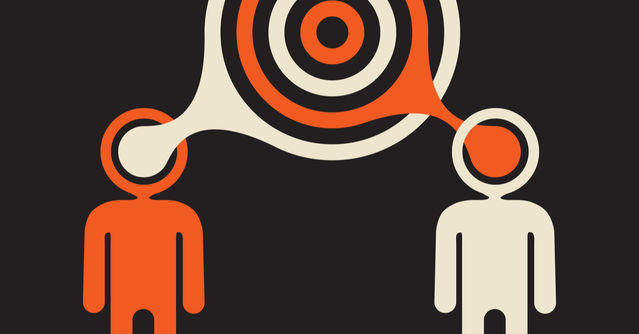Spirituality
Can We Help People from Cultures Other Than Our Own?
Understanding others' belief systems is a key to cross-cultural healing.
Posted January 2, 2020 Reviewed by Gary Drevitch

My work with war-affected communities has taken me to places where people have some very different beliefs than I do about mental health and psychological distress.
In rural Guatemala, a belief in witchcraft is common. Living among Guatemalan refugees in Mexico, I met a woman plagued for years by grief, constant fear, and nightmares of soldiers entering her home to kill her family. She was convinced these experiences meant she’d been bewitched and that she could only be healed by a curandero, a traditional healer who could undo the spell. I thought she was highly traumatized by the genocide that had taken the lives of several of her relatives, but she had little interest in my clinical perspective.

The family I lived with in the same refugee camp nearly lost a child to susto, a malady comprised of physical and psychological symptoms, believed to result from the loss of the soul following a severe fright. Everyone knew about susto, because everyone in the camp had lived through a terrifying war, survived a perilous journey to Mexico, and experienced years of uncertainty and vulnerability in the camp. The family I stayed with had fled from a massacre near their village, and spent two cold and rainy months hiding in the rugged mountains that run north from Guatemala into Mexico. Two-year-old Milo, who became severely ill, was healed by a curandero, who used a combination of herbs and prayers to restore his health and heal the shock of his frightening sojourn in the mountains. I can't say for sure what healed young Milo, but it may well have been the herbs (ruda is a common healing plant in traditional medicine), combined with the love and support of his family and their faith in the healer's power.
In Afghanistan, I met people who’d fallen under the power of djins, mischievous spirits that, when angered, can take possession of a person and cause severe psychological and physical distress. My friend Samed Khan, a bright and passionate community leader, survived a djin attack only by clutching the Koran and reciting a set of prayers. Afghans generally understand the psychological effects of war, poverty, and life stress in ways that are familiar to Westerners. However, they also have ways of describing their suffering that don’t translate easily into the jargon of western psychiatry: jigar khun, which translates as “liver blood” but refers to a state of sadness, akin perhaps to heartbreak. Spend any amount of time in Afghanistan, share a cup or two of chai with people, and you’ll learn about jigar khun. It’s in the air, living quietly just below the surface, the result of all that’s been lost—loved ones, livelihoods, possessions, and hopes for a better future. Afghans also speak of asabi, the nervous irritability that comes from intense stress; it could be traumatic stress, or just the accumulation of the endless frustrations and deprivations of everyday life. A lot of Afghan women—up to half in our surveys in Kabul—will sometimes hit themselves, at times quite hard, when they are highly distressed. This disturbing expression of emotional pain wasn’t widely known among researchers using questionnaires developed in the west, because hitting oneself isn’t an item on most of those questionnaires. Finally, they’ll tell you about the importance of sabr, an Islamic concept meaning patience and endurance in the face of adversity, and about the power of family and faith as sources of strength and resilience. Ask about symptoms of PTSD, as my research team did in 2006, and people will nod, but it’s not how they describe or understand the impact of 40 years of war.
In Sri Lanka, I met survivors of a horrific attack in which Tamil militants slaughtered 54 Sinhalese villagers during a single night, from infants to old women and men. Some survivors wondered what their murdered loved ones might have done in a previous life to bring such suffering upon themselves. Nearly all the survivors found great comfort in performing the ritual of dane or alms-giving, in which meals and gifts are provided to the local monks, who in turn chant prayers so that the souls of those murdered that horrible night will never again suffer so terribly in a future life. The comfort the survivors experienced from performing dane was real, and it was powerful. One family was too poor to provide meals and gifts to the monks, and their inability to perform dane was a source of enduring anguish and shame. I was there with a film crew to document the villagers’ pathways to healing in the wake of the massacre. We provided the funding to this family so that they could finally have the dane ceremony, and in return they allowed us to film the remarkable experience. The relief they experienced, the unburdening and release, were profound to witness.
We needn’t share other people’s belief systems in order to support their healing or help strengthen their resilience. But we do need to understand how they experience and make sense of their suffering, how they speak of their distress, and to whom they turn for help. Too often, mental health professionals schooled in the concepts and methods of western psychiatry and psychology assume a kind of universal truth to our biomedical and psychological models and methods. But a closer look at the research suggests that a bit more humility may be in order.
A growing body of research has documented the limited efficacy of antidepressant medications for many people, and has shown that when benefits are found, they are often largely attributable to a placebo effect. (There's a fascinating 60 Minutes segment on this research.) And as Dutch psychologist Pim Cuijpers and his colleagues recently demonstrated, while we can rightly feel confident that psychotherapy is generally helpful, we still don’t really know why this is so. An over-reliance on small samples and a host of other methodological shortcomings has left significant gaps in our understanding of why therapy helps—whether it’s due to a set of common factors shared by effective therapists, or to the specific ingredients of individual therapy models (e.g., interpretations linking present difficulties to early experience, replacing maladaptive cognitions with more helpful thinking, or modifying self-defeating behavior).
Local ways of healing psychological distress aren’t inherently better or worse than methods imported from other contexts. No culture has evolved a set of healing practices sufficiently powerful to overcome the devastating effects of genocide and mass violence. An integration of approaches, when developed thoughtfully and respectfully, can be quite powerful. We see this, for example, in the incorporation of eastern mindfulness practices into western modes of individual and group therapy. My research team in Lebanon is incorporating mindfulness into our psychosocial support groups for Syrian refugee parents (see my post on the Caregiver Support Intervention). So far, the results are promising: A pilot randomized controlled trial showed significant benefits to participants’ mental health and psychosocial well-being, with significantly lower levels of stress and distress among program participants, and no changes in the control group. Similarly, a research team in Israel, led by Amit Bernstein, has had great success using a mindfulness-based intervention to heal trauma among refugees and asylum seekers from Africa.
So here are the takeaways:
-
When working with people who hold explanatory models (explanations of the causes, nature, and treatment of suffering) that differ from our own, a stance of respectful curiosity provides a helpful starting point for bridging differences and sharing potentially helpful approaches to healing.
-
If we start from the assumption that we already know how suffering is experienced, understood, and expressed wherever we go, we limit our ability to hear about real and important cultural differences. At best, this will impede our ability to be helpful; at worst, our understanding will be flawed, our interventions will be out of sync with actual needs, and we will overlook powerful local beliefs and rituals that can foster healing and resilience.
-
We don’t need to share a belief to appreciate its power. I don’t believe in reincarnation, but I do believe in the power of a belief in reincarnation for the villagers I worked with in Sri Lanka. Nothing in my therapeutic toolbox would have been a match for the power of dane. That doesn’t mean that this culturally valued ritual was sufficient to heal the grief and shock of the villagers’ tragedy. Supportive counseling provided by a local organization, something culturally unfamiliar in the village, was valued by many people as an additional and welcome source of comfort and healing.


